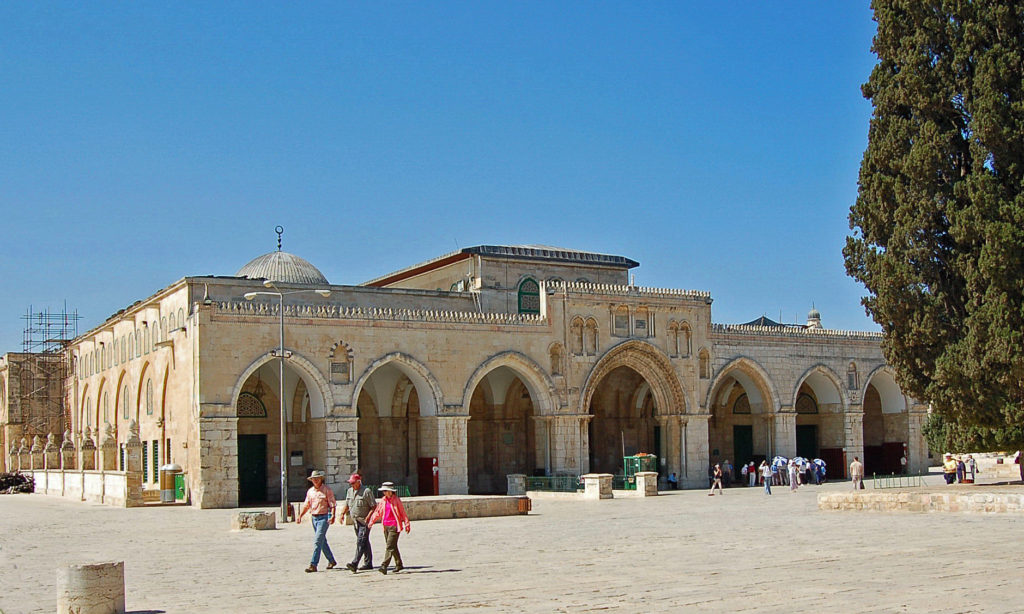
The recent violent conflicts between Israelis and Palestinians grew from a confrontation at Jerusalem’s Al-Aqsa (or El-Aksa) Mosque, located on a spot important to Muslims, Jews and Christians.
In 70 A.D., Roman forces sent to Jerusalem to put down a revolt destroyed the Jewish Second Temple, rebuilt by King Herod on a platform known as the “Temple Mount.” By the seventh century, the mostly Christian residents of Jerusalem were reportedly using the Temple Mount as their garbage dump. In 638, Muslim forces captured Jerusalem, toward which Muhammad had originally directed his followers to pray. According to the Quran, Muhammad made a magical night journey from Mecca to “al-masjid al-aqsa” (the farthest mosque). Later writings said he traveled from there to heaven. Not discovering the farthest mosque, which they believed had been in Jerusalem, Muslim rulers built a small prayer hall they called “Al-Aqsa Mosque” atop the southern end of the Temple Mount, which Muslims call “al-Haram al-Sharif” (the Noble Sanctuary), near where Jesus overturned the tables of the money changers. Builders oriented the mihrab in the southern wall in the direction of Mecca, toward which Muslims were then praying.
Al-Aqsa Mosque has been rebuilt and enlarged many times. Christian Crusaders repurposed it as a palace, adding a rose window to an area used as a chapel. Today, Al-Aqsa Mosque, its original southern wall and Crusader window intact, encloses more than an acre, accommodating 4000 worshippers. The carpeted interior is divided into seven aisles by columns donated by Benito Mussolini. Because of its association with Muhammad’s visit to heaven, Al-Aqsa Mosque is the third holiest place on earth for most Muslims, after mosques in Mecca and Medina, Saudi Arabia. Non-Muslims cannot enter Al-Aqsa Mosque, but can explore the Temple Mount, all of which Muslims consider to be a mosque, so long as they refrain from praying.
Comments are closed.